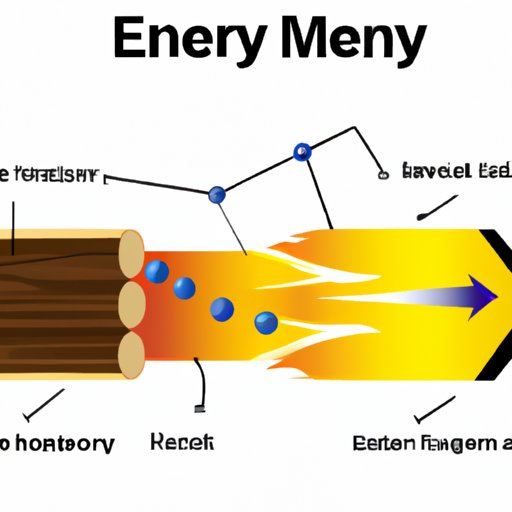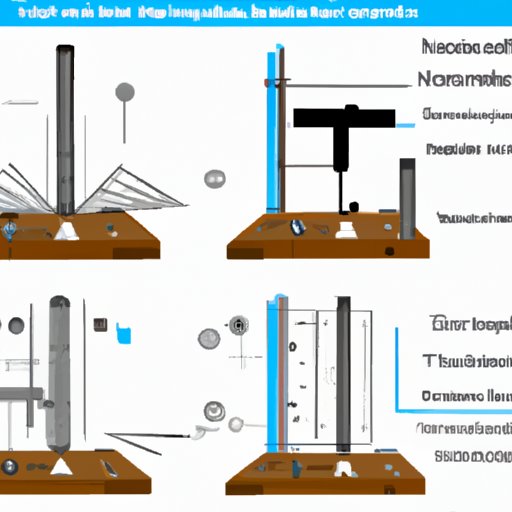
Finding Kinetic Energy: A Comprehensive Guide
If you were ever curious about how to find kinetic energy of an object, you’ve come to the right place. Whether you’re a student struggling with physics problems or simply interested in understanding the concept of kinetic energy, this article will provide you with a comprehensive guide.
Understanding Kinetic Energy: A Comprehensive Guide to Finding It
Kinetic energy is the energy of motion. Any object that is in motion has kinetic energy, and the speed and mass of that object determine how much kinetic energy it possesses. This means that if you increase either the speed or mass of an object in motion, the kinetic energy will also increase.
To better understand kinetic energy, let’s look at a few real-life examples. A moving car, a thrown baseball, and a swinging pendulum are all examples of objects with kinetic energy. The car has a considerably higher kinetic energy than the baseball, which in turn has a higher kinetic energy than the pendulum.
Calculating Kinetic Energy: Simple Steps for Accurate Results
To calculate the kinetic energy of an object, we use the formula KE = 1/2 mv^2, where m is the mass of the object and v is the velocity (speed) of the object. The formula tells us that the kinetic energy of an object is directly proportional to its mass and the square of its velocity.
Let’s say, for example, we want to calculate the kinetic energy of a football with a mass of 0.5 kg and a velocity of 20 m/s. Plugging these values into the formula, we get:
KE = 1/2 x 0.5 kg x (20 m/s)^2 = 100 J
This tells us that the kinetic energy of the football is 100 Joules.
Mastering the Formula: Tips and Tricks for Finding Kinetic Energy
While the formula for calculating kinetic energy is straightforward, there are a few tips and tricks you can use to make it easier and avoid common mistakes. For example, if you’re given the mass of an object in grams instead of kilograms, make sure to convert it before plugging it into the formula.
Another trick is to break the problem down into smaller steps. For example, if you’re given the velocity of an object in miles per hour but the mass in kilograms, convert the velocity to meters per second first before plugging in the values to the formula.
One common mistake to avoid is forgetting to square the velocity when calculating kinetic energy. This is a crucial step, as the formula requires you to square the velocity before multiplying it by the mass.
There are many online tools and calculators available to help you calculate kinetic energy quickly and with ease. Some popular tools include Physics Classroom and Energy Calculator.
Solving for Kinetic Energy: Important Equations and Examples
While the formula KE = 1/2 mv^2 is the most commonly used equation for calculating kinetic energy, there are other equations that can also be used depending on the situation. For example, you can use momentum and force equations to determine kinetic energy in certain scenarios.
Let’s say, for instance, that an object has a mass of 2 kg and is traveling at a velocity of 5 m/s. We can calculate the object’s momentum using the formula p = mv, where p is the momentum in kg m/s. Plugging in the values, we get:
p = 2 kg x 5 m/s = 10 kg m/s
We can then use the momentum equation KE = p^2/2m, where KE is the kinetic energy in Joules. Plugging in the values, we get:
KE = (10 kg m/s)^2/2 x 2 kg = 50 J
As you can see, solving for kinetic energy using momentum and force equations involves a few more steps than the basic formula, but it can be a useful technique in certain scenarios.

Measuring Motion: Techniques for Determining Kinetic Energy
Accurately measuring mass and velocity is key to finding the kinetic energy of an object. There are various tools and methods available for measuring motion, including speedometers, radar guns, and GPS devices.
When measuring the mass of an object, you can use a balance or scale. It’s important to ensure that the scale is zeroed out before placing the object on it, and that the object is placed in the center of the scale to avoid errors in measurement. Similarly, when measuring velocity, it’s important to use a reliable measuring tool and ensure that it’s calibrated correctly.
Measuring motion involves a degree of uncertainty and error, however. For example, a radar gun may not be able to measure the precise velocity of a moving object due to environmental factors such as wind and the angle of the radar beam. It’s important to keep these uncertainties in mind when making measurements and calculations.
Unlocking the Secrets of Kinetic Energy: Beginner’s Guide to Calculation
For those just starting to learn about kinetic energy, the calculation process may seem overwhelming at first. However, breaking it down into smaller, simpler steps can make it easier to understand and apply the concepts.
One useful trick is to become familiar with the relevant vocabulary and concepts, such as mass, velocity, momentum, and energy. Understanding these concepts will make it easier to understand how the formula for kinetic energy works and how to apply it to different scenarios.
Kinetic Energy Demystified: Expert Tips for Identifying and Quantifying It
There are many applications of kinetic energy in science and engineering, from calculating the energy required to launch a spacecraft to understanding how a bicycle works. Experts in the field use a variety of techniques and tools to accurately identify and quantify kinetic energy in different scenarios.
One important concept in the field of kinetic energy is energy conservation. This principle states that the total energy in a closed system remains constant over time. Understanding this concept is crucial to accurately calculating the kinetic energy in different scenarios.
Resources for further exploration of kinetic energy include online tutorials, textbooks, and scientific journals. These materials provide a wealth of information on the topic and can help those interested in delving deeper into the subject matter.
Conclusion
Calculating kinetic energy may seem daunting, but with the right tools, techniques, and knowledge, it can be a straightforward process. Understanding the concepts of mass, velocity, and energy is key to unlocking the secrets of kinetic energy and applying it to different scenarios.
So whether you’re a student struggling with physics homework or simply interested in learning more about motion and energy, don’t be intimidated by kinetic energy. With practice and persistence, you too can become an expert in finding kinetic energy.




